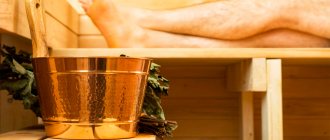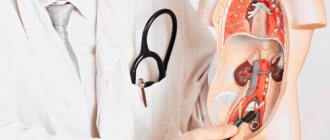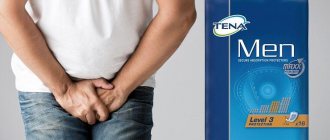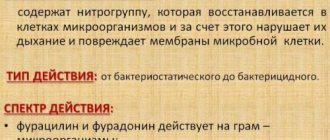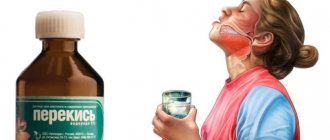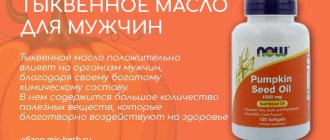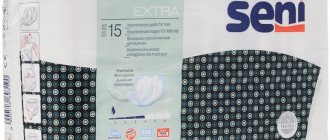Features of therapeutic nutrition for kidney disease
The basic principles of dietary nutrition for kidney disease are as follows:
- The amount of protein in the diet is reduced to 20-25 g per day. In this case, the reduction occurs mainly due to plant proteins (baked goods, cereals, legumes), since their biological value in terms of amino acid composition is lower than that of animal proteins. Limiting proteins is necessary because during their metabolism, waste products (urea, creatinine) remain in the body. They belong to the class of nitrogenous substances and are excreted from the body by the kidneys. But with renal pathologies, waste products can be retained due to impaired excretory and filtration functions (typical of glomerulonephritis) and ultimately poison the body with toxins.
- For the first 2 weeks of treatment, it is necessary to limit meat and poultry. Next, it is better to boil the meat and then bake or lightly fry.
- In the early stages of the disease, phosphorus intake is also controlled, since kidney disease worsens the excretion of excess salts from the body, which is why this chemical element can accumulate. A surplus of phosphorus contributes to the leaching of calcium from bones, which threatens the gradual development of osteoporosis and a tendency to fractures. It should be taken into account that phosphorus is found in legumes, peanuts, dairy products, cola and beer.
- Restrictions are also imposed on sodium, which causes fluid retention in the body, which causes edema and increased blood pressure. Therefore, it is necessary to reduce salt intake to 2-5 g per day (in some cases, salt is eliminated altogether). It is better to cook without salt at all, since it is already contained in the food itself.
- The daily volume of liquid should not exceed 0.8-1 liters. This includes not only water, but also any other drinks, as well as dairy and first courses.
- Fractional meals are practiced 5-6 times a day in small portions.
- The total calorie intake should be sufficient to maintain normal weight.
Diet therapy is one of the main components of complex treatment of urological diseases
Drug treatment of many urological diseases is ineffective without proper nutrition or diet therapy. It is with the help of diet that it is possible to eliminate unwanted complications during treatment, saturate the organs with the necessary substances for restoration and a speedy recovery. Diet, in fact, is not just an additional remedy, but one of the main components of the complex treatment of urological diseases.
When prescribing diet therapy, an experienced urologist takes into account not only the caloric content of food, its qualitative composition and the balance of nutrients necessary for the body, but also the volume of food for one-time consumption, its temperature and consistency, as well as the fraction of doses.
Therapeutic nutrition for pyelonephritis
Since in the acute phase pyelonephritis is accompanied by an intense inflammatory process and intoxication, in the first 5-10 days you should adhere to a vegetarian diet based on fresh vegetables, fruits, and vegetable soups.
It is recommended to eat zucchini, beets, watermelons, carrots, baked apples, semolina and buckwheat porridge. Milk, eggs and lean fish are allowed in limited quantities. After reducing intoxication and inflammation, you can add some meat dishes to your diet.
In addition, it is important to maintain a drinking regime, since a lack of fluid provokes the formation of kidney stones and stagnation of cell waste products. The menu should contain enough healthy fats and carbohydrates against the background of a slight protein deficiency.
Therapeutic nutrition for pyelonephritis cannot contain smoked, fried and spicy foods, as well as pickles and industrial canned food. You can eat lean fish, beef, rabbit, chicken, and turkey. Whole grain porridge, fresh vegetables and diluted fruit juices are healthy.
What not to eat if you have kidney disease
Diet number 7 involves excluding the following foods and dishes:
- fatty meat and poultry, fried and stewed meat dishes without prior boiling;
- any meat, fish and mushroom broths, as well as those based on legumes;
- sausages, smoked meats and canned food (fish and meat);
- fatty fish, including smoked and salted fish, fish roe;
- legumes in any form, including soy sauce;
- marinades and pickles, pickled vegetables and fruits;
- fatty cheeses, refractory fats;
- chocolate, cocoa and strong coffee;
- from vegetables: radish, radish, spinach, sorrel, garlic, onion;
- mushrooms;
- meat, fish and mushroom sauces, mustard, pepper, horseradish, spicy and fatty snacks;
- mineral water containing sodium;
- purchased pastries and bread (salt is also added during their preparation), some types of pasta, during the production of which salt is added.
What can you eat if you have kidney disease?
Therapeutic nutrition for kidney disease allows the use of the following products:
- vegetarian soups with cereals and vegetables, seasoned with sour cream, butter, vinegar, citric acid;
- lean beef and veal, rabbit, chicken, turkey, boiled tongue, trimmed lamb (the meat must first be boiled and then baked or stewed, served in pieces or chopped);
- bread, pancakes and pancakes without salt;
- low-fat boiled fish (after boiling it can be baked or lightly fried), including stuffed and aspic;
- milk, sour cream, cream, cottage cheese and dishes made from it, fermented milk drinks;
- eggs up to 2 pieces per day in dishes either prepared in the form of an omelet or soft-boiled (pay attention to compliance with the daily protein intake);
- various cereals and pasta without salt;
- fruits and berries, raw and boiled, compotes, jelly, jam and jelly made from them;
- vegetables in any culinary preparation, vegetable salads, vinaigrettes without pickles;
- honey, sweets, popsicles;
- from spices and seasonings: cinnamon, vanillin, cumin, dill, vinegar, citric acid, wine vinegar;
- homemade sour cream, milk and tomato sauce, sweet and sour fruit sauces, vegetable sauces without salt;
- tea, weak coffee, fruit juices, rosehip decoction, vegetable juices without salt;
- foods that have a diuretic effect: cucumbers, zucchini, pumpkins, lettuce, beets, dried apricots, apricots, raisins, apricots, melon, watermelon, prunes.
Recipes
According to survey results, patients find it more difficult to limit salt in their daily diet. Many people complain of feeling unwell, dizziness, and nausea. Some people simply cannot stand the taste of vegetables or minced meat without salt. Clinicians make the following comments on this question.
To get used to limiting or completely eliminating salt, you should resort to the following recommendations:
- gradual salt restriction;
- adding salt to dishes while eating, not during cooking;
- using seasonings in the form of fresh herbs: cilantro, dill, parsley, onion.
First you need to get rid of the habit of eating salty foods. It is important to remember that each dish contains the required amount of natural salt. So, after a week of salt restriction, patients begin to feel the natural taste of food and some foods seem salty to them: fish, spices, boiled potatoes.
First course recipes
Vegetable soup
For cooking you will need beets, carrots, bell peppers, onions, tomatoes and potatoes. Vegetables are sauteed in vegetable oil until softened, chopped potatoes and tomatoes are added, poured with boiling water and simmered over low heat for an hour. Then add chopped fresh dill and leave for an hour. The dish is served hot with sour cream.
Cooking time 1 hour. 100 g/55 Kcal. Protein content - 1 g, carbohydrates - 5 g, fat - 2.3 g.
Buckwheat soup
For cooking you will need chicken legs (barbecue without skin), potatoes, carrots, onions, greens, buckwheat. Bring the water to a boil in a saucepan, place the legs and cook for 15 minutes. Then add chopped potatoes and washed buckwheat. Sauté the onions and carrots at the same time, and then add them to the soup and reduce the heat. The total cooking time will be 40 minutes + 10 minutes of infusion. A few minutes before readiness, add fresh chopped herbs to taste.
100 g/70 Kcal. Protein content - 5.3 g, carbohydrates - 31%, fat - 3.4 g.
Second courses
Pilaf with chicken
Photo: www.taste.com.au
To prepare you will need chicken breast, rice, tomatoes, onions, carrots. The rice is thoroughly washed, the chicken breast is peeled, chopped into cubes, and fried in oil until golden brown. Then add chopped carrots and onions and sauté. Later, peeled tomatoes are added and simmered. Add washed rice, add water, chopped cilantro and parsley and simmer over low heat until cooked.
Cooking time - 1 hour. Per 100 g/345 Kcal. Protein content - 24.5 g, carbohydrates - 1.5 g, fat - 24.8 g.
Georgian stew in a pot
For cooking you will need beef pulp, onions, carrots, bell peppers, and potatoes. The meat is thoroughly washed under running water and cut into pieces. Onions, carrots and peppers are sautéed and infused. Place the meat in a hot container and fry until golden brown. Then add sauteed vegetables, potatoes, add a little boiled water and simmer for an hour. The resulting mass is placed in pots and cooked in the oven for about 15 minutes.
Cooking time: 65 minutes. Per 100 g/385 Kcal. Protein content - 8.4 g, carbohydrates - 4.1 g, fat - 8 g.
Dessert
Prune dessert
To prepare you will need almonds, eggs, prunes, sugar, powdered sugar, cream. Sugar is placed in a hot frying pan, heated, chopped almonds are added. The mixture is poured onto parchment and rolled out into a thin layer, cooled. Beat the egg whites, add powdered sugar and continue beating until stiff foam. Pour cream into the whites and knead into a homogeneous mixture.
Prunes are soaked in boiling water, washed, chopped with a knife and added to the protein mixture. The layer of nuts and sugar is broken into pieces and decorated with a protein mixture with prunes. The remaining mixture of nuts and sugar is crushed and sprinkled with nougat. The dish is placed in the freezer for several hours.
Cooking time 40 minutes + freezing. Per 100 g/339 Kcal. Protein content - 6.1 g, carbohydrates - 35.4 g, fat - 20.
Orange cookies
To prepare you will need oranges, honey, vegetable oil, lemon juice, flour and soda. Add flour, slaked soda and baking powder to 50 g of orange zest, 50 ml of lemon juice and water, vegetable oil and beat with a blender. You should get a dough similar to thick sour cream. The resulting dough is rolled out into layers, shaped fragments are squeezed out, the baking sheet is greased with oil, the resulting cookies are laid out and baked until golden brown.
Total cooking time 20 minutes. Per 100 g/300 Kcal. Protein content - 3.5 g, carbohydrates - 38.2 g, fat - 9.5 g.

